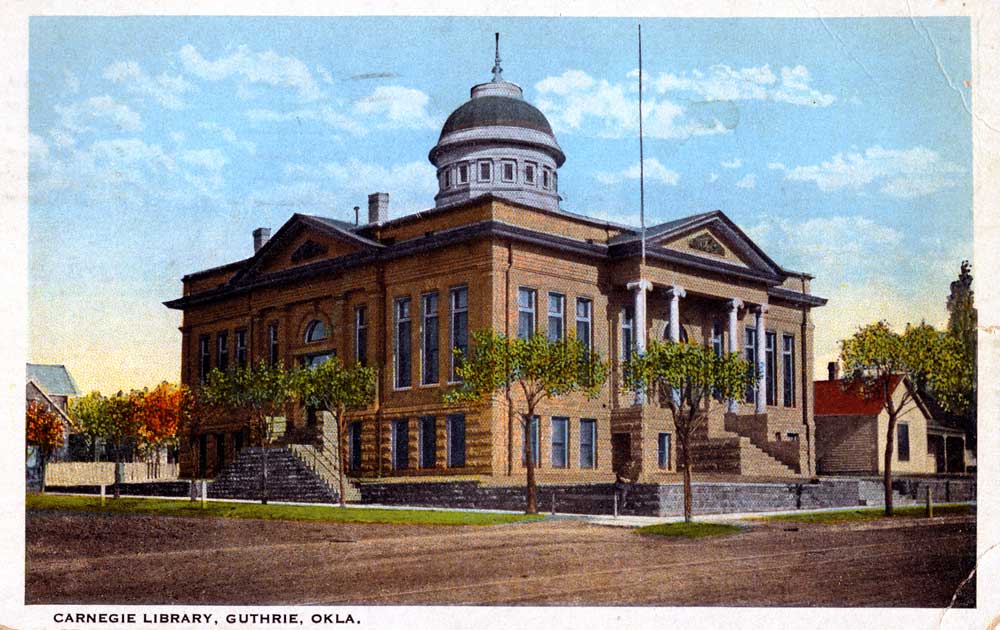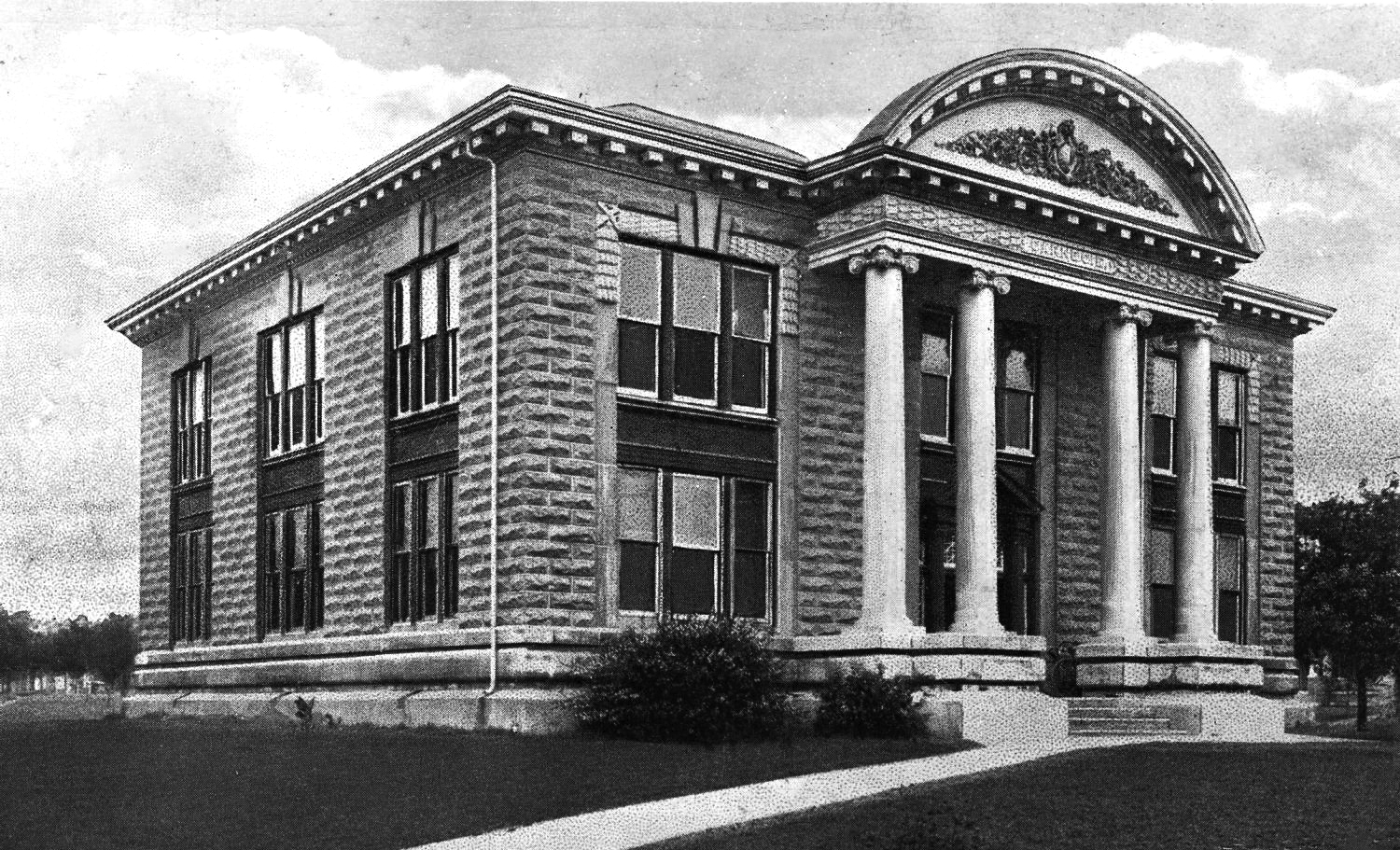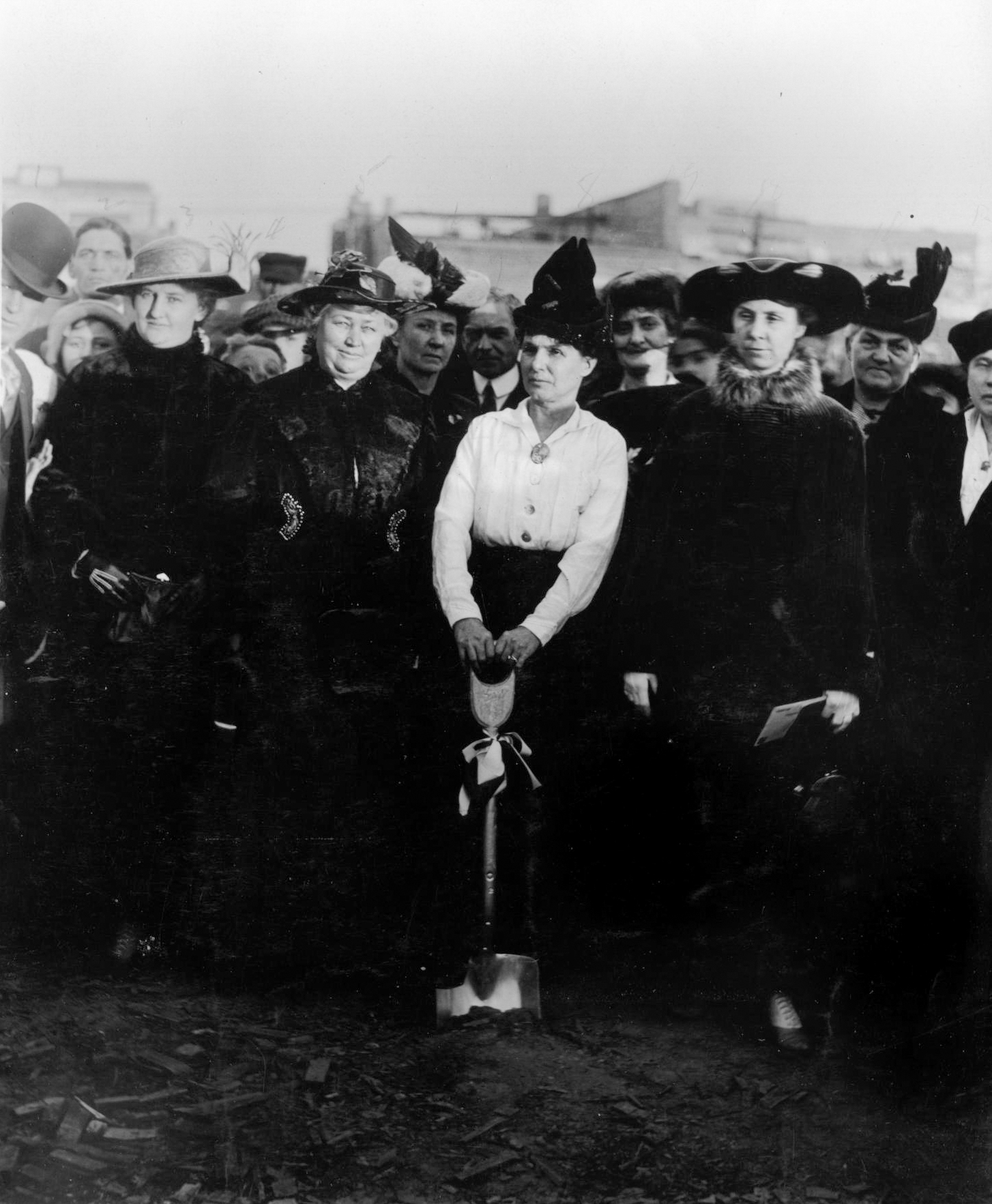
The Encyclopedia of Oklahoma History and Culture
CARNEGIE LIBRARIES.
Development of educational institutions in Indian Territory and Oklahoma Territory coincided with the public library movement in the United States. In late-nineteenth- and early-twentieth-century Oklahoma, as the population of the Twin Territories increased and towns grew larger, middle-class institutions began to appear. Credit for establishing the territories' libraries generally goes to the local Women's Clubs, whose activities almost always included setting up local reading rooms and collecting books to furnish those facilities with material to lend to patrons.
The library movement was aided after 1900 by a grants program established by famed steel magnate Andrew Carnegie. Retiring from the steel industry in 1900 at age sixty-five, Carnegie devoted the rest of his life to philanthropy. In total, his Carnegie Corporation (trustee for much of his enormous fortune) provided more than $41 million for 1,689 free public library buildings in 1,419 communities around the United States. One condition of every Carnegie grant was that a community must pledge an annual amount of 10 percent of the grant, from tax monies and not from endowment or gift, to maintain the library.
Oklahoma communities received $464,500 in twenty-four Carnegie grants between 1899 and 1916. Construction of the first two public library buildings in Oklahoma Territory (Oklahoma City, 1899 and Guthrie, 1901) was funded by Carnegie grants. The smallest grant went to Ponca City in 1908 for $6,500 and the largest to Oklahoma City and Muskogee, 1910, for $60,000. Other Oklahoma grants included: 1903, Ardmore, Chickasha, El Reno; 1904, Enid, Shawnee; 1905,Tahlequah; 1906, McAlester; 1908, Bartlesville; 1909, Perry; 1910, Tulsa; 1911, Cordell, Wagoner, Hobart; 1914, Elk City, Frederick; 1915, Woodward, Collinsville; and 1916, Lawton, Miami, Sapulpa.
At first the Carnegie Corporation did not require that a library be designed by an architect, and no stylistic criteria were attached to the building's appearance, other than that it should signify the institution's importance to the community. Carnegie Libraries have distinctive styles; more than half were designed as Classical Revival, often called Carnegie Classical, identified by columns and a large pediment over the main entrance. Seventeen of Oklahoma's Carnegies are Classical Revival. While not all bear the Carnegie name in their title, their appearance generally indicates their genesis.
Unfortunately, the onset of the Great Depression impacted most local economies throughout the state, and there was little money for libraries. As the New Deal made money available in the 1930s, some cities applied for Works Projects Administration funds to repair or expand existing facilities. In Oklahoma the WPA constructed ten new libraries, reconstructed or repaired five, and built additions to two. Most WPA library "reconstruction" projects resulted in the total obliteration of the library's original architectural style, generally replacing it with the trendy Art Deco or Moderne styles, and "addition" projects did the same.
Of Oklahoma's twenty-four Carnegie Libraries, seventeen still stand, in various states of alteration: Ardmore, Bartlesville, Collinsville, Cordell, Elk City, El Reno, Frederick, Guthrie, Hobart, Lawton, Muskogee, Perry, Sapulpa, Shawnee, Tahlequah, Wagoner, and Woodward. Of the seventeen, only nine are still libraries: Collinsville, Elk City, El Reno, Frederick, Hobart, Perry, Sapulpa, Tahlequah, and Wagoner. The others serve as museums, offices or meeting places. Razed buildings include Chickasha, Enid, McAlester, Miami, Oklahoma City, Ponca City, and Tulsa. The Ardmore, Cordell, El Reno, Guthrie, Hobart, Lawton, and Tahlequah libraries are listed in the National Register of Historic Places.








